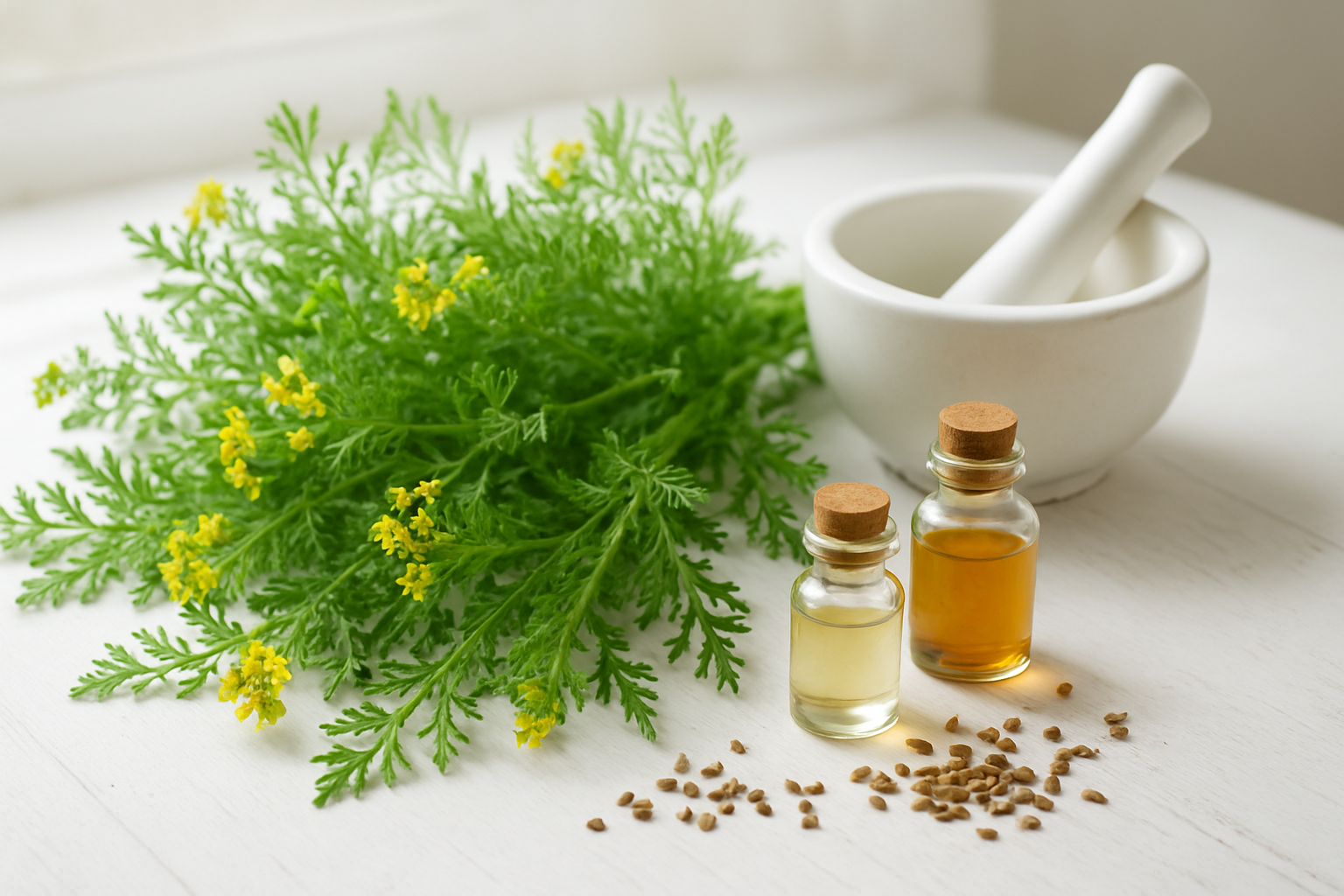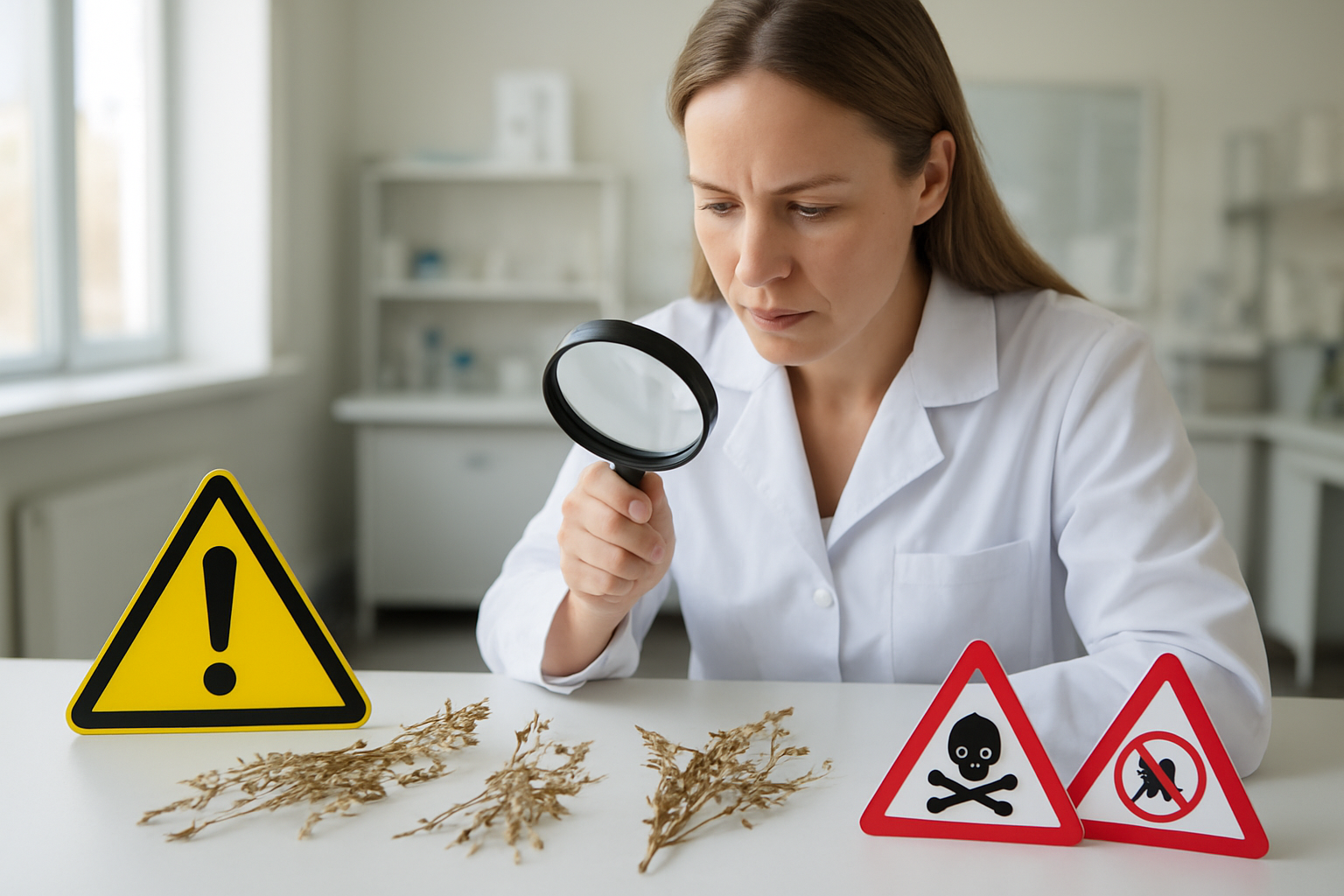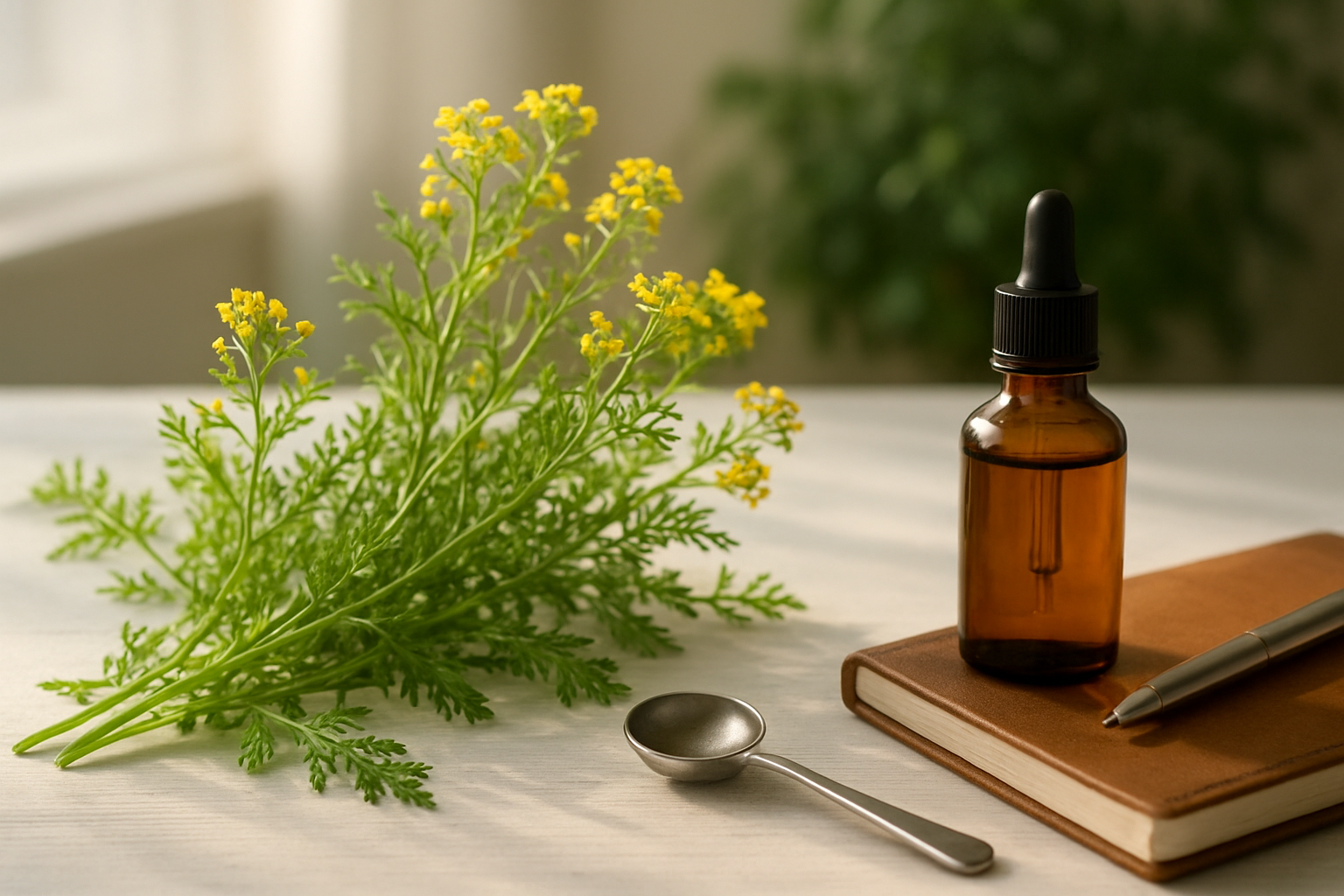Flixweed (Descurainia sophia) is a lesser-known medicinal herb that’s catching attention among natural health enthusiasts and herbalists seeking plant-based wellness solutions. This wild mustard family member has been used in traditional medicine for centuries, but many people don’t know about its potential benefits or how to use it safely.
This guide is perfect for anyone curious about flixweed’s therapeutic properties, from beginners exploring herbal remedies to experienced practitioners wanting reliable information about this unique plant. We’ll cover the science-backed health benefits that make flixweed worth considering, examine the safety considerations and potential risks you should know before trying it, and provide practical usage methods with clear dosage guidelines to help you use this herb confidently and effectively.
Understanding Flixweed: Essential Plant Knowledge

Botanical characteristics and identification features
Flixweed stands out as a slender annual herb that typically reaches heights between 20 to 90 centimeters. The plant showcases deeply divided, feathery leaves that create an almost lace-like appearance. These leaves display a blue-green color and grow in an alternate pattern along the stem. The flowers emerge in small clusters at the branch tips, featuring four tiny pale yellow petals that measure only 2-3 millimeters in length.
The most distinctive feature for identification lies in the seed pods, which are narrow, linear siliques measuring 15-25 millimeters long. These pods contain numerous small, reddish-brown seeds arranged in two rows. The entire plant has a somewhat grayish appearance due to fine branched hairs covering the stems and leaves. During flowering season, which spans from late spring through early autumn, the plant develops an open, branched structure that gives it an airy, delicate look.
Natural habitat and global distribution patterns
Originally native to Europe and Asia, flixweed has spread across multiple continents as a naturalized species. The plant thrives in disturbed soils, making it common along roadsides, in vacant lots, construction sites, and agricultural fields. It prefers well-drained, sandy or loamy soils and can tolerate various pH levels.
| Region | Status | Common Locations |
|---|---|---|
| North America | Naturalized | Western and central states |
| Europe | Native | Mediterranean to northern regions |
| Asia | Native | Central and western regions |
| Australia | Introduced | Limited distribution |
The plant demonstrates remarkable adaptability to different climatic conditions, from arid regions to temperate zones. It grows particularly well in areas with mild winters and dry summers, explaining its widespread distribution across the American West and Mediterranean climates worldwide.
Historical uses in traditional medicine systems
Traditional healers across various cultures have recognized flixweed’s medicinal properties for centuries. In European folk medicine, practitioners used the plant to treat respiratory ailments, digestive disorders, and skin conditions. The seeds received particular attention for their supposed ability to soothe coughs and reduce inflammation.
Native American tribes in regions where the plant naturalized incorporated flixweed into their healing practices. They prepared teas from the leaves and stems to address stomach problems and used poultices for external wounds. Persian and Arab traditional medicine systems documented the plant’s use for treating eye infections and as a general tonic.
Ancient texts describe various preparation methods, including:
- Seed infusions for respiratory support
- Leaf poultices for skin irritations
- Whole plant decoctions for digestive issues
- Oil extractions for topical applications
Active compounds and nutritional composition
Flixweed contains several bioactive compounds that contribute to its therapeutic potential. The seeds are particularly rich in mucilage, which provides the plant’s soothing properties. This polysaccharide content can reach up to 25% of the seed’s dry weight.
The plant also contains flavonoids, including quercetin and kaempferol derivatives, which offer antioxidant properties. Glucosinolates, characteristic compounds of the mustard family, are present in moderate amounts. These sulfur-containing compounds break down into isothiocyanates, which may contribute to the plant’s antimicrobial effects.
Key nutritional components include:
- Protein content: 20-25% in seeds
- Fixed oils: 15-20% in seeds
- Fiber: High content, primarily mucilage
- Minerals: Iron, calcium, and potassium
- Vitamins: Vitamin C and various B-complex vitamins
The mucilage content makes flixweed seeds particularly valuable, as this substance swells when mixed with water, creating a gel-like consistency that traditional medicine has long valued for its protective and healing properties.
Proven Health Benefits of Flixweed

Respiratory System Support and Lung Health Enhancement
Flixweed has earned recognition for its remarkable ability to support respiratory wellness, particularly in managing persistent coughs and bronchial irritation. The plant’s natural expectorant properties help loosen stubborn mucus and phlegm, making it easier for the body to clear respiratory passages. Traditional practitioners have long valued flixweed for treating chronic bronchitis, where its soothing compounds work to reduce inflammation in the bronchial tubes while promoting healthy mucus production.
Research indicates that flixweed’s bioactive compounds, including flavonoids and alkaloids, contribute to its bronchodilatory effects. These substances help relax the smooth muscles surrounding the airways, potentially easing breathing difficulties associated with minor respiratory complaints. The plant’s natural antihistamine properties may also provide relief for those experiencing seasonal respiratory discomfort.
People dealing with dry, unproductive coughs often find flixweed particularly beneficial. The herb’s demulcent qualities create a protective coating along irritated throat tissues, reducing the urge to cough while supporting the healing process. This dual action of soothing irritation and promoting productive expectoration makes flixweed a valuable ally during cold and flu seasons.
Digestive Wellness and Gastrointestinal Relief
The digestive benefits of flixweed stem from its gentle yet effective action on the gastrointestinal tract. This herb contains natural compounds that stimulate digestive enzyme production, helping the body break down food more efficiently and reducing common complaints like bloating and indigestion. Traditional use suggests that flixweed can help restore balance to disrupted digestive patterns, particularly after periods of dietary stress or illness.
Flixweed’s carminative properties make it especially useful for managing gas and abdominal discomfort. The herb helps relax intestinal muscles, allowing trapped gas to pass more easily while reducing cramping sensations. Many people find that regular use of flixweed supports overall digestive comfort and promotes more regular bowel movements.
The plant’s mucilaginous content provides a protective coating for the digestive tract lining, which can be particularly beneficial for those with sensitive stomachs or minor gastric irritation. This soothing action, combined with flixweed’s mild astringent properties, may help tighten loose tissues and reduce excessive secretions in the digestive system.
Clinical observations suggest that flixweed may support healthy gut flora balance, creating an environment where beneficial bacteria can thrive. This prebiotic-like effect contributes to improved overall digestive health and may enhance nutrient absorption.
Anti-inflammatory Properties for Joint and Muscle Comfort
The anti-inflammatory compounds found in flixweed offer natural support for those experiencing minor joint stiffness and muscle discomfort. These bioactive substances work by inhibiting certain inflammatory pathways, potentially reducing the production of pro-inflammatory mediators that contribute to pain and swelling. Regular use may help maintain comfortable joint mobility and support the body’s natural recovery processes after physical activity.
Flixweed’s topical application has shown promise for addressing localized inflammation. When prepared as a poultice or infused oil, the herb can deliver its anti-inflammatory compounds directly to affected areas, providing targeted relief for minor muscle strains, bruises, or joint discomfort. The cooling sensation often experienced with topical flixweed applications adds to its soothing effects.
The herb’s natural analgesic properties work synergistically with its anti-inflammatory action, creating a comprehensive approach to comfort management. Unlike synthetic alternatives, flixweed provides gentle relief without the harsh side effects often associated with conventional pain management options.
Athletes and active individuals have reported that incorporating flixweed into their wellness routines helps maintain joint flexibility and reduces recovery time between training sessions. The herb’s ability to support healthy circulation may also contribute to its effectiveness in promoting tissue healing and reducing exercise-related inflammation.
Antioxidant Effects for Cellular Protection
Flixweed contains an impressive array of antioxidant compounds that help protect cells from oxidative stress and free radical damage. These protective substances include flavonoids, phenolic acids, and vitamin C, all of which work together to neutralize harmful molecules that can accelerate aging and contribute to various health concerns. The synergistic action of these antioxidants provides more comprehensive protection than any single compound could offer alone.
The herb’s antioxidant activity extends beyond basic free radical scavenging. Research suggests that flixweed compounds may help support the body’s own antioxidant defense systems, including the production of natural enzymes like glutathione peroxidase and superoxide dismutase. This dual approach of providing direct antioxidant protection while enhancing internal defense mechanisms creates a robust cellular protection strategy.
Regular consumption of flixweed may contribute to healthier skin appearance and slower signs of aging. The antioxidants help protect collagen and elastin fibers from degradation while supporting healthy cellular turnover. Many users report improved skin texture and reduced appearance of fine lines after consistent use of flixweed preparations.
The neuroprotective potential of flixweed’s antioxidants has garnered attention from researchers studying age-related cognitive changes. While more research is needed, preliminary studies suggest that the herb’s protective compounds may help maintain healthy brain function and support memory.
Blood Sugar Regulation and Metabolic Support
Flixweed demonstrates promising potential for supporting healthy blood sugar levels and overall metabolic function. The herb contains compounds that may enhance insulin sensitivity and improve glucose uptake by cells, helping maintain steady energy levels throughout the day. This metabolic support can be particularly beneficial for individuals looking to maintain healthy weight and energy balance.
Traditional use of flixweed for metabolic support aligns with modern understanding of its bioactive compounds. Certain alkaloids and flavonoids in the plant appear to influence key enzymes involved in carbohydrate metabolism, potentially slowing the absorption of sugars and promoting more stable blood glucose levels after meals.
The herb’s fiber content also contributes to its metabolic benefits by slowing digestion and promoting feelings of satiety. This effect can help reduce overeating and support healthy weight management goals. Additionally, the soluble fiber in flixweed may help maintain healthy cholesterol levels by binding to cholesterol-rich compounds in the digestive tract.
People incorporating flixweed into their wellness routines often report more stable energy levels and reduced cravings for sugary snacks. The herb’s ability to support healthy metabolism extends to its potential role in maintaining optimal lipid profiles and supporting cardiovascular health through multiple pathways.
Safety Considerations and Potential Risks

Known Side Effects and Adverse Reactions
While flixweed is generally well-tolerated by most people, some individuals may experience mild gastrointestinal upset when first introducing this herb to their routine. Common side effects include stomach irritation, nausea, and occasional digestive discomfort, particularly when taken on an empty stomach or in higher doses.
Some users report experiencing mild dizziness or headaches during the initial adjustment period. These symptoms typically resolve within a few days as the body adapts to the herb. Skin reactions, though rare, can occur in sensitive individuals, manifesting as mild rashes or itching.
People with existing digestive conditions should pay extra attention to how their body responds, as flixweed’s compounds can occasionally aggravate sensitive stomachs. Starting with smaller amounts and gradually increasing intake helps minimize these potential reactions.
Drug Interactions and Contraindications
Flixweed contains compounds that may interact with certain medications, making careful consideration essential for anyone taking prescription drugs. The herb can potentially enhance the effects of blood-thinning medications like warfarin or aspirin, increasing bleeding risk.
Individuals taking diabetes medications should monitor their blood sugar levels closely, as flixweed may amplify the glucose-lowering effects of these drugs. The combination could lead to hypoglycemia in some cases.
Blood pressure medications may also interact with flixweed, as the herb possesses mild hypotensive properties. People with existing low blood pressure should avoid using flixweed or consult their healthcare provider before starting.
Those scheduled for surgery should discontinue flixweed use at least two weeks beforehand to prevent complications with anesthesia and blood clotting during procedures.
Pregnancy and Breastfeeding Safety Guidelines
Pregnant women should avoid flixweed entirely due to insufficient safety data and potential risks to fetal development. The herb’s active compounds could cross the placental barrier and affect the developing baby in unpredictable ways.
Traditional use suggests flixweed may influence uterine contractions, making it particularly risky during pregnancy as it could potentially trigger premature labor or miscarriage. No studies have established safe dosage levels for expectant mothers.
Breastfeeding mothers should also exercise extreme caution, as flixweed compounds can pass through breast milk to infants. Babies’ developing systems are particularly sensitive to herbal compounds, and their immature liver and kidneys may struggle to process these substances effectively.
Women planning to conceive should discontinue flixweed use and wait at least one menstrual cycle before attempting pregnancy to ensure complete clearance from their system.
Practical Usage Methods and Dosage Guidelines

Tea Preparation Techniques and Brewing Instructions
Fresh flixweed leaves and seeds can be transformed into a therapeutic tea using simple methods. For a standard brew, combine 1-2 teaspoons of dried flixweed with 8 ounces of hot water just below boiling point (around 190°F). Allow the mixture to steep for 10-15 minutes to extract the beneficial compounds effectively.
When using fresh plant material, double the quantity to account for water content. Cover the cup during steeping to prevent essential oils from escaping. Strain thoroughly before drinking, as the small seeds can create a gritty texture if left in the tea.
For enhanced flavor and therapeutic benefits, consider blending flixweed with complementary herbs like chamomile or peppermint. The tea maintains its potency for up to 24 hours when refrigerated, making it convenient for multiple servings.
Tincture Making and Alcohol Extraction Methods
Creating a flixweed tincture requires high-proof alcohol (40-60% ethanol) and dried plant material. Use a 1:5 ratio – one part flixweed to five parts alcohol by weight. Combine the ingredients in a clean glass jar and seal tightly.
Store the mixture in a dark location for 2-4 weeks, shaking daily to maximize extraction. The alcohol draws out both water-soluble and fat-soluble compounds, creating a concentrated preparation. After the extraction period, strain through fine cheesecloth or coffee filters.
Properly made tinctures maintain potency for 3-5 years when stored in dark glass bottles away from direct sunlight. Label containers with preparation date and plant material used for accurate record-keeping.
Topical Application Procedures for External Use
External flixweed preparations work well for skin conditions and minor wounds. Create a poultice by crushing fresh leaves with a small amount of water to form a paste. Apply directly to affected areas and secure with clean cloth or bandages.
For larger areas, prepare a strong tea using double the normal concentration and apply as a compress. Soak clean cloth in the cooled liquid and place on the skin for 15-20 minutes. Reapply 2-3 times daily for best results.
Oil infusions offer another effective topical method. Gently heat dried flixweed in carrier oil like olive or coconut oil for several hours using low heat. Strain and store the finished oil in dark containers.
Recommended Dosages for Different Health Conditions
Dosage recommendations vary based on preparation method and intended use. For digestive support, consume 1 cup of flixweed tea 2-3 times daily before meals. The mild nature of the tea allows for regular use without significant side effects.
Tincture dosages typically range from 20-40 drops taken in water or juice, administered 2-3 times daily. Start with lower amounts and gradually increase based on individual response and tolerance levels.
| Condition | Tea Dosage | Tincture Dosage | Frequency |
|---|---|---|---|
| Digestive Issues | 1 cup | 20-30 drops | 2-3x daily |
| Respiratory Support | 1/2 cup | 15-25 drops | 3x daily |
| Topical Use | As needed | N/A | 2-3x daily |
| General Wellness | 1/2 cup | 10-20 drops | 1-2x daily |
Always begin with smaller doses to assess individual sensitivity. Pregnant women, nursing mothers, and individuals with chronic health conditions should consult healthcare providers before using flixweed preparations. Children require significantly reduced dosages – typically one-quarter to one-half adult amounts depending on age and weight.
Sourcing and Quality Assurance Tips

Identifying Authentic Flixweed Products and Suppliers
Finding genuine flixweed products starts with understanding what to look for on labels and packaging. Authentic products should list “Descurainia sophia” as the primary ingredient, not vague terms like “herb blend” or “proprietary formula.” Reputable suppliers will provide detailed information about the plant’s origin, harvest date, and processing methods.
Check for third-party testing certificates that verify the product’s identity and purity. These documents should be readily available from trustworthy suppliers, either on their website or upon request. Look for suppliers who work directly with growers or have established relationships with verified botanical sources.
Red flags include unusually low prices, products without clear labeling, or suppliers who can’t provide botanical authentication. Legitimate vendors will have customer service teams knowledgeable about their products and willing to answer questions about sourcing and testing protocols.
Research the company’s reputation through customer reviews and professional associations. Many reliable suppliers belong to organizations like the American Herbal Products Association or have certifications from organic certifying bodies.
Organic Versus Conventional Options Comparison
The choice between organic and conventional flixweed depends on your priorities regarding purity, environmental impact, and budget considerations.
| Feature | Organic Flixweed | Conventional Flixweed |
|---|---|---|
| Pesticide Residues | Minimal to none | Potentially present |
| Price | 20-40% higher | More affordable |
| Availability | Limited suppliers | Widely available |
| Testing Requirements | Stricter standards | Basic safety testing |
| Environmental Impact | Lower impact | Higher chemical usage |
Organic flixweed undergoes more rigorous testing for contaminants, including heavy metals, pesticides, and microbiological hazards. The certification process requires annual inspections and detailed record-keeping throughout the supply chain.
Conventional options may offer better value for casual users or those just starting with herbal supplements. However, regular users or individuals with chemical sensitivities often prefer organic products despite the higher cost.
Consider your intended use frequency and health goals when making this decision. Those using flixweed for therapeutic purposes may benefit more from the additional purity assurance that comes with organic certification.
Storage Methods for Maximum Potency Preservation
Proper storage directly affects flixweed’s therapeutic compounds and shelf life. Store dried flixweed in airtight containers made of dark glass or food-grade plastic, away from light, heat, and moisture. Ideal storage temperatures range between 60-70°F with humidity levels below 60%.
Whole dried plants retain potency longer than powdered forms. If you buy powder, transfer it immediately to an airtight container and use within six months. Whole dried flixweed can maintain quality for up to two years when stored correctly.
Label containers with purchase dates and batch numbers for easy tracking. Keep different products separate to prevent cross-contamination and maintain individual potency profiles.
Avoid storing flixweed in areas with temperature fluctuations like kitchens, bathrooms, or near heating vents. A cool, dry pantry or dedicated herb storage area works best.
For liquid extracts or tinctures, follow manufacturer recommendations, but generally store in dark glass bottles in cool areas. Refrigeration may extend shelf life but isn’t always necessary for alcohol-based preparations.
Check stored products regularly for signs of deterioration like color changes, unusual odors, or moisture buildup. When in doubt, replace the product rather than risk using degraded material.

Flixweed offers a range of health benefits when used properly, from supporting digestive health to providing anti-inflammatory properties. The key is understanding both its therapeutic potential and the safety precautions that come with it. Like any herbal remedy, quality matters just as much as proper dosage, so sourcing from reputable suppliers and following recommended guidelines will help you get the most out of this traditional plant medicine.
Before adding flixweed to your wellness routine, talk with your healthcare provider, especially if you’re taking other medications or have existing health conditions. Start with small amounts to see how your body responds, and always prioritize quality over price when choosing your source. With the right approach, flixweed can become a valuable addition to your natural health toolkit.













